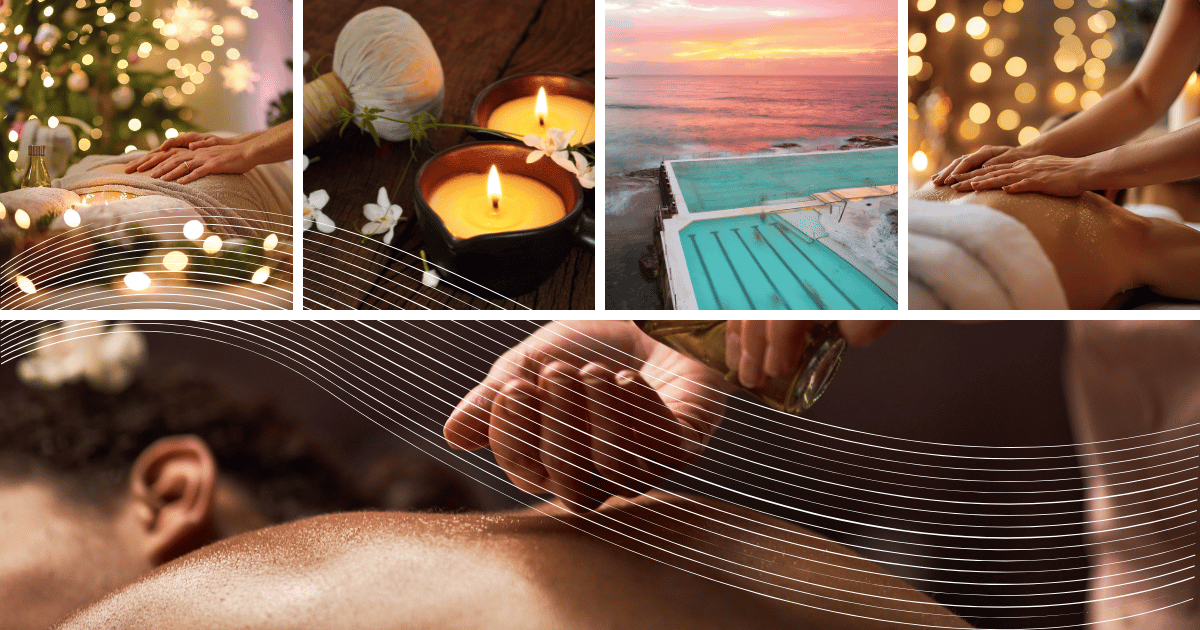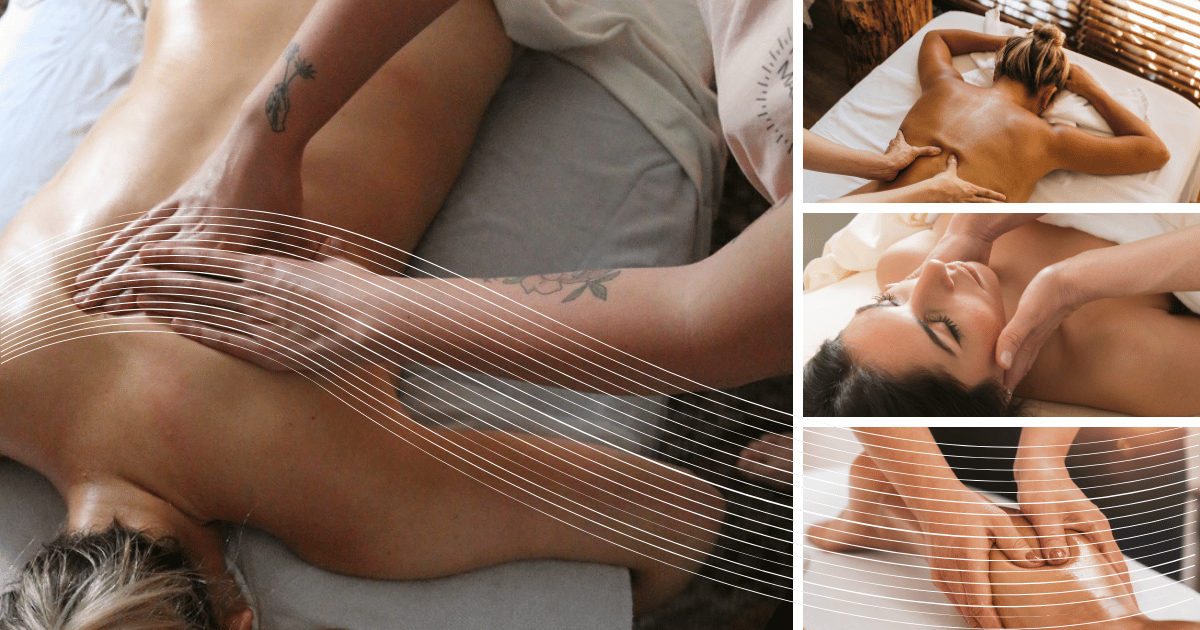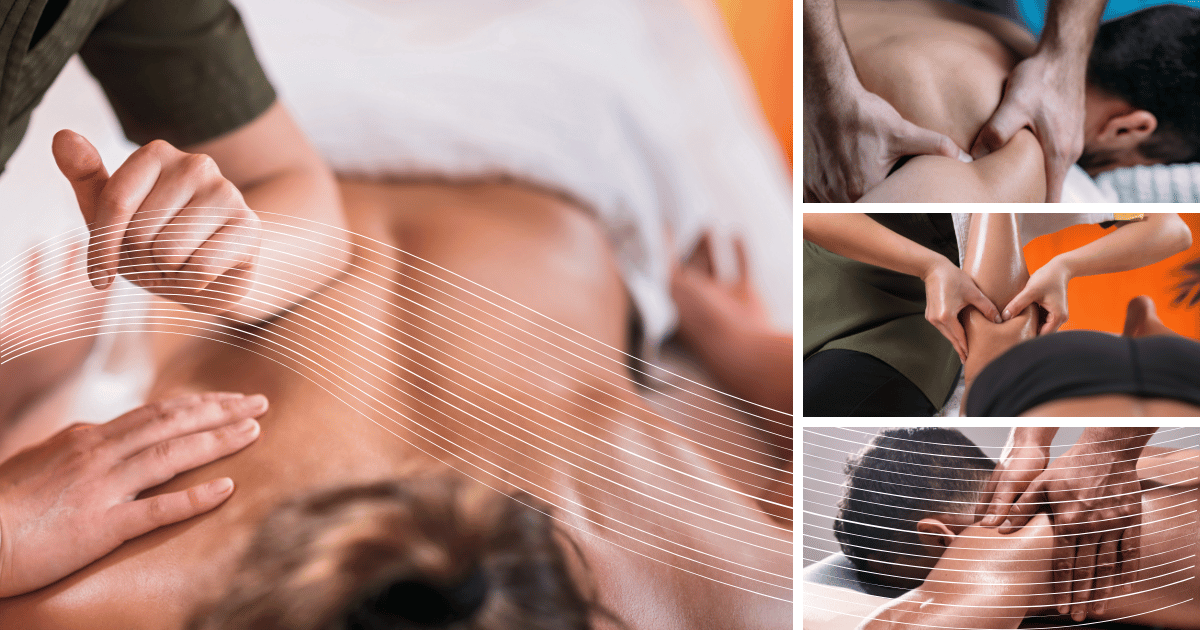Types of Massage in Bondi Junction – Which One Is Best for You?
Finding the perfect massage in Bondi Junction can transform your approach to pain management, recovery after events, or healing post-surgery. In this article, we delve into three popular therapies—remedial massage, sports massage, and lymphatic drainage—explaining what each entails, how they function, and the specific goals they best support. You’ll gain insights into the therapeutic mechanisms behind each method, clear examples of who stands to benefit, and practical steps to determine which treatment aligns with your condition or performance objectives. This guide connects specific issues (like back pain, runner’s tightness, and post-operative swelling) to the massage type that typically yields the best results, and it outlines what to expect during your clinic visit, from assessment to follow-up. Throughout, we incorporate local terms such as massage Bondi Junction, remedial massage Bondi Junction, and sports massage Bondi Junction to help you find the right care in your area. Keep reading for straightforward decision-making tools, comparison tables, therapist insights, and direct guidance on booking a personalised program in Bondi Junction.
What Is Remedial Massage and Who Benefits Most in Bondi Junction?
Remedial massage is a clinical approach to massage therapy aimed at diagnosing and treating musculoskeletal dysfunction, restoring movement, and alleviating chronic pain. It works by addressing soft-tissue restrictions—such as muscle tightness, trigger points, and fascial adhesions—through targeted techniques like deep tissue work, myofascial release, and trigger point therapy, leading to enhanced circulation and neuromuscular balance. Typical recipients include individuals suffering from chronic back pain, posture-related neck and shoulder tension, and those recovering from soft-tissue injuries who require focused, progressive treatment plans. Understanding these mechanisms empowers you to identify when remedial therapy is more suitable than a general relaxation massage and prepares you to discuss specific goals with your practitioner.
What Techniques Are Used in Remedial Massage for Pain Relief?
Remedial sessions incorporate a variety of specialist techniques to address different layers of dysfunction and restore optimal function. Deep tissue work targets dense muscle layers to alleviate chronic tension, myofascial release eases fascial stiffness that limits movement, and trigger point therapy focuses on hyperirritable spots that refer pain elsewhere. These techniques are often complemented by posture assessments and corrective stretches during a session to facilitate a neuromuscular reset and quicker symptom relief. Engaging in a conversation about technique preferences with your therapist ensures that the session intensity aligns with your pain threshold and recovery aspirations.
How Can Sports Massage Enhance Athletic Performance in Bondi Junction?
Sports massage enhances performance by improving tissue pliability, correcting muscular imbalances and optimising neuromuscular coordination. Regular sessions facilitate increased flexibility, improved joint range and reduced risk of compensatory movement patterns. By tuning the musculoskeletal system, athletes experience smoother biomechanics and greater power output under load.
Mechanisms and Benefits of Sports Massage for Performance and Injury Prevention Many coaches, athletes, and sports medicine professionals hold the belief, derived from observations and experience, that massage can confer several benefits upon the body, including increased blood flow, reduced muscle tension and neurological excitability, and an enhanced sense of well-being. Massage can exert mechanical pressure, which is anticipated to improve muscle compliance, thereby increasing joint range of motion, decreasing passive stiffness, and reducing active stiffness (biomechanical mechanisms). Mechanical pressure may contribute to increased blood flow by elevating arteriolar pressure, as well as raising muscle temperature through friction. Depending on the massage technique employed, mechanical pressure on the muscle is expected to modulate neural excitability, as measured by the Hoffman reflex (neurological mechanisms), either increasing or decreasing it. Alterations in parasympathetic activity (assessed via heart rate, blood pressure, and heart rate variability) and hormonal levels (measured by cortisol concentrations) subsequent to massage induce a relaxation response (physiological mechanisms). A reduction in anxiety and an improvement in mood state also precipitate relaxation (psychological mechanisms) post-massage. Consequently, these benefits of massage are expected to aid athletes by improving performance and mitigating injury risk. However, research investigating the effects of pre-exercise massage on performance and injury prevention remains limited.The mechanisms of massage and effects on performance, muscle recovery and injury prevention, PA Hume, 2005
What Role Does Sports Massage Play in Improving Flexibility and Range of Motion?
Sports massage improves flexibility by applying controlled tension to tight muscles and associated connective tissues, which gradually increases stretch tolerance. Techniques such as passive muscle lengthening and proprioceptive neuromuscular facilitation stimulate neuromuscular pathways to sustain gains. Enhanced range of motion reduces strain during dynamic movements and supports efficient biomechanics.
When Should Athletes Schedule Pre-Event Sports Massage for Optimal Results?
Athletes benefit most from pre-event massage when it is scheduled 24–48 hours before competition, allowing tissues to adapt without residual soreness. Shorter, lighter sessions on event day focus on circulation stimulation, muscle activation and mental priming. Timing ensures optimal flexibility and readiness without compromising muscle tone or energy levels.
Scheduling Guidelines: massage services near clovelly
48 hours prior – deep mobilisation to correct imbalances
24 hours prior – moderate pressure with dynamic stretches
Event day – light effleurage and trigger point activation
How Does Sports Massage Contribute to Mental and Physical Performance?
Sports massage contributes to mental sharpness by reducing cortisol levels and promoting endorphin release, which supports calm focus. Physically, increased circulation and decreased muscular tension translate into more efficient force production and reduced risk of performance-limiting discomfort. The combined mind-body effect enhances confidence and resilience under competitive pressure.
Remedial sessions incorporate a variety of specialist techniques to address different layers of dysfunction and restore optimal function. Deep tissue work targets dense muscle layers to alleviate chronic tension, myofascial release eases fascial stiffness that limits movement, and trigger point therapy focuses on hyperirritable spots that refer pain elsewhere. These techniques are often complemented by posture assessments and corrective stretches during a session to facilitate a neuromuscular reset and quicker symptom relief. Engaging in a conversation about technique preferences with your therapist ensures that the session intensity aligns with your pain threshold and recovery aspirations.
How Does Remedial Massage Help with Chronic Pain and Muscle Tension?
Remedial massage alleviates chronic pain through both mechanical and physiological effects: it enhances local circulation, reduces muscle tone, improves lymphatic drainage, and alters pain signaling via neuromuscular input. Over a series of treatments, clients often experience gradual improvements in range of motion and fewer pain flare-ups as posture and movement patterns are corrected. Typical care plans suggest an initial phase of more frequent sessions transitioning to maintenance visits as function improves, with practitioners setting realistic timelines based on severity and contributing factors. These outcomes make remedial massage a practical choice for the long-term management of common musculoskeletal issues.
Remedial massage is ideal for chronic pain and postural challenges.
It employs deep, targeted techniques to restore movement and alleviate pain.
Treatment plans generally progress from intensive early sessions to periodic maintenance.
Medicinal Collective offers remedial massage tailored to chronic pain and postural concerns, with practitioners who integrate assessment-driven techniques into personalised plans. The clinic in Bondi Junction operates with a collaborative ethos led by Helena and Stephen, providing therapist profiles to match skills with client needs. To schedule a remedial assessment or consult with a specific therapist about a treatment pathway, please call the clinic phone number listed in their contact details.
How Does Sports Massage Enhance Athletic Performance and Recovery?
Sports massage is a performance-focused therapy that optimises muscle function before events and accelerates recovery afterwards by employing techniques tailored to an athlete’s training cycle. It combines mobilisation, assisted stretching, cross-fibre friction, and targeted flushing work to enhance tissue elasticity, reduce delayed onset muscle soreness, and correct movement restrictions that can lead to injury. Athletes benefit from different session types—pre-event mobilisation, between-event maintenance, and post-event recovery—each with specific objectives to either prime performance or hasten return-to-readiness. Understanding these distinctions enables athletes to schedule sessions for maximum benefit throughout their training blocks and competition days.
What Are the Key Sports Massage Techniques for Injury Prevention?
Key sports massage techniques concentrate on preserving range of motion and preventing overload by addressing tissue quality and movement patterns. Assisted stretching enhances joint mobility, cross-friction aids in remodelling tendon and muscle attachments, and rapid flushing techniques facilitate the removal of metabolic waste after exertion. Strategically scheduling sessions—pre-season for capacity building, pre-event for mobilisation, and immediately post-event for flushing—reduces cumulative microtrauma and lowers the risk of injury. These methods yield measurable improvements in recovery markers and movement efficiency when combined with training adjustments.
Which Athletes and Active Individuals Benefit Most from Sports Massage?
Different types of athletes require varying frequencies and emphases: endurance athletes benefit from regular flushing and mobility work to maintain tissue quality, strength athletes focus on neural recovery and soft-tissue mobility, while recreational athletes gain from maintenance sessions to prevent recurring tightness. Typical recommendations range from weekly sessions during intense training to fortnightly or monthly check-ins during maintenance phases, tailored to workload and recovery capacity. This athlete-specific structuring ensures that sports massage supports both short-term race goals and long-term resilience.
Athletes choose sports massage to enhance performance and expedite recovery.
Techniques include assisted stretching, cross-fibre work, and flushing.
Frequency is determined by athlete type and training load.
Medicinal Collective offers sports massage services and can package sessions for athletes, aligning therapist expertise with training calendars to support performance and recovery goals; reach out to the Bondi Junction team for tailored programmes and practitioner matches.
What Are the Benefits of Lymphatic Drainage Massage in Bondi Junction?
Lymphatic drainage massage is a specialised, gentle technique that stimulates lymph flow to reduce swelling, assist fluid balance, and support detoxification processes. It employs light, rhythmic strokes to guide interstitial fluid toward lymph nodes, aiding in the reduction of oedema, alleviating post-surgical swelling, and bolstering immune system function by promoting the clearance of metabolic waste. Individuals experiencing post-operative fluid retention, certain chronic oedema conditions, or those seeking targeted detoxification protocols often opt for lymphatic drainage as a complement to medical care. This method is distinctly gentle compared to deep remedial or sports techniques and is chosen when delicate tissue handling and graduated protocols are necessary.
How Does Lymphatic Drainage Massage Support Detoxification and Immune Health?
Lymphatic techniques enhance the lymphatic system’s ability to transport proteins, cellular debris, and excess fluid back to central circulation, reducing local oedema and supporting immune surveillance. Practically, this translates into diminished swelling after surgery, quicker soft-tissue recovery, and complementary support for inflammatory conditions when medically appropriate. Sessions are conducted with light pressure and precise directionality to follow lymph pathways; safety checks and medical clearance are standard for post-operative clients. Expect gradual reductions in swelling over multiple sessions rather than immediate drastic changes.
Who Should Consider Lymphatic Drainage for Swelling and Post-Surgery Recovery?
Lymphatic drainage is suitable for clients with medically cleared post-operative swelling, chronic fluid retention, or those advised by clinicians to incorporate gentle manual drainage as part of a recovery protocol. Contraindications—such as active infection or certain cardiac conditions—should be discussed with both medical and massage practitioners before treatment begins. A consultation ensures appropriate timing, session spacing, and integration with any surgical aftercare plan to maximise safe benefits. Requesting a lymphatic-focused assessment helps determine whether this therapy should be standalone or part of a broader recovery programme.
Lymphatic drainage effectively reduces swelling and supports post-op recovery when clinically indicated.
It employs gentle, directional strokes to facilitate fluid movement and immune support.
Multiple sessions are typically necessary for measurable reductions in oedema.
Medicinal Collective provides lymphatic drainage with post-surgical and detoxification protocols and recommends consultations with Corina or Lina to determine suitability and timing for recovery plans. Clients in Bondi Junction can arrange assessments to align lymphatic care with medical clearances.
How to Choose the Best Massage for Your Needs at Medicinal Collective?
Choosing between remedial, sports, and lymphatic massage hinges on your primary goal: pain relief and function, athletic performance and recovery, or fluid reduction and post-op support. A straightforward decision flow is: identify your main goal, assess whether the issue is structural or circulatory, then match to remedial, sports, or lymphatic approaches accordingly and schedule a brief consultation to confirm medical suitability. Medicinal Collective’s consultation process combines this decision flow with therapist specialisms, health fund rebate guidance, and a personalised treatment plan that balances intensity, frequency, and aftercare. Booking a short assessment with a named practitioner ensures the chosen pathway aligns with your health history and objectives.
What Are the Key Differences Between Remedial, Sports, and Lymphatic Massage?
A concise comparison aids in selection and sets expectations for session experience and outcomes. Remedial massage targets chronic pain and structural dysfunction using deeper, corrective techniques; sports massage optimises performance and recovery with mobilisation and flushing work; lymphatic drainage employs very gentle strokes for fluid movement and post-op support. Session intensity and technique choice reflect the treatment goal—remedial is corrective and progressive, sports is performance-tuned, and lymphatic is delicate and protocol-driven. Understanding these differences helps you select a suitable first session and plan follow-up.
How Can Consultation with Our Bondi Junction Therapists Help You Decide?
A consultation documents your history, current goals, and any contraindications, then recommends an initial treatment plan and frequency based on clinical findings and desired outcomes. Practitioners at Medicinal Collective—who include Helena, Stephen, Corina, Shane, and Lina—utilise integrated East-West approaches and evidence-based techniques to tailor sessions, and they can advise on health fund rebates and suitable follow-up pathways. The consultation also establishes clear short-term goals and measurable markers for progress, allowing you to evaluate effectiveness and adjust the plan as needed. If you wish to proceed, request a targeted assessment to align your needs with the right therapist and programme.
Identify your goal, assess your condition, and book a brief consultation.
Match the recommended massage type to your clinical or performance aim.
Confirm scheduling, frequency, and rebate options with your therapist.
This final list provides a practical, step-by-step decision flow to assist you in choosing and booking the most suitable massage in Bondi Junction at a clinic that prioritises personalised, evidence-based care.
In addition to the specific massage therapies discussed, Medicinal Collective offers a wider range of services to support your health journey. For those interested in structural alignment and nervous system health, chiropractic services are also available to complement your treatment plan.
Frequently Asked Questions
What should I expect during my first massage session?
During your first massage session, the therapist will conduct a comprehensive assessment to understand your medical history, current conditions, and specific goals. This may involve discussing any pain points, previous injuries, and lifestyle factors. Based on this information, the therapist will tailor the session to your needs, explaining the techniques they will use and what you can expect in terms of sensations and outcomes. It's a chance to ask questions and ensure you feel comfortable before the treatment begins.
How often should I schedule massage therapy sessions?
The frequency of massage therapy sessions depends on your individual goals and conditions. For chronic pain or injury recovery, more frequent sessions (once or twice a week) may be recommended initially, tapering off to maintenance sessions (every few weeks) as you improve. Athletes may require sessions aligned with their training cycles, while those seeking relaxation might opt for monthly visits. Discussing your specific needs with your therapist will help establish an optimal schedule for your situation.
Are there any contraindications for massage therapy?
Yes, there are several contraindications for massage therapy. Conditions such as acute infections, severe osteoporosis, certain cardiovascular issues, and recent surgeries may require caution or complete avoidance of massage. It's crucial to inform your therapist about any medical conditions or medications you are taking. A thorough consultation will help determine if massage is safe for you and if any modifications are necessary to ensure your safety and comfort during treatment.
Can massage therapy help with stress and anxiety?
Massage therapy can be highly effective in alleviating stress and anxiety. The physical touch and techniques used in massage promote relaxation, reduce muscle tension, and stimulate the release of endorphins, which are natural mood lifters. Regular sessions can help lower cortisol levels, the hormone associated with stress, leading to improved mental well-being. Many clients report feeling more relaxed and centred after a massage, making it a valuable tool for managing stress and anxiety in daily life.
What should I wear to my massage appointment?
Your choice of attire for a massage appointment can depend on the type of massage you are receiving. Generally, it is advisable to wear comfortable, loose-fitting clothing that allows for easy movement. For remedial or sports massages, you may be asked to undress to your comfort level, as this allows the therapist to access the areas needing treatment. However, you will be provided with a sheet or towel for privacy. Always communicate with your therapist about your comfort level regarding clothing during the session.
How can I enhance the benefits of my massage therapy?
To enhance the benefits of your massage therapy, consider staying hydrated before and after your session, as this helps flush out toxins released during treatment. Engaging in gentle stretching or light activity post-massage can also support muscle recovery and flexibility. Additionally, maintaining open communication with your therapist about your experience and any areas of concern will allow them to tailor future sessions to better meet your needs. Incorporating relaxation techniques, such as deep breathing or meditation, can further amplify the therapeutic effects.




